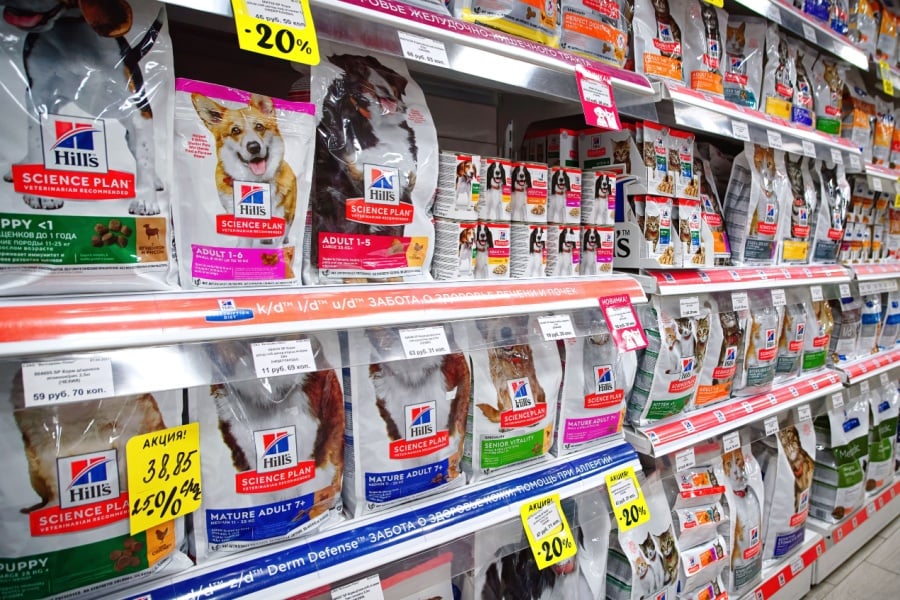Updated January 15, 2025
The trucking industry is experiencing major shifts in supply chain strategies, sustainability efforts, and what consumers expect from companies. These shifts are driven by e-commerce, globalization, and other technological advancements.
The latest State of the Industry report from Ryder and FreightWaves expounds on this changing landscape, presenting a comprehensive transportation logistics industry analysis that highlights key trends, drivers, and upcoming technologies alongside other trucking industry key insights.
Our goal with this analysis is to equip industry professionals, stakeholders, and decision-makers with the knowledge and tools they need to navigate this change effectively.
In this article, we'll explore some of the following insights and trends:
- Since July 2024, truckload volumes and spot-market rates have slightly increased month over month, rejection rates are surging to levels more than two years ago, and new contract rates continue to be repriced lower.
- Intermodal volumes remain higher than last year with double digit volume growth, and international intermodal volumes are growing faster than domestic.
- The maritime market has recovered from the Lunar New Year and anticipates a positive outlook for the summer. Ocean spot rates continue to trend lower despite relatively healthy volumes.
- Inflation has remained persistent, which has lowered expectations that the upcoming Federal Open Market Committee (FOMC) meetings will yield any interest rate cuts. The labor market is a mixed bag despite solid employment metrics.
Let's start by examining freight demand.
Truckload market is shifting
The truckload market is currently navigating through a significant shift driven by changing capacity dynamics rather than traditional demand-side factors. Over the past two years, there has been a noticeable exit of capacity from the market, suggesting that a critical threshold of capacity reduction may now be influencing market conditions. This shift raises questions about the market's trajectory beyond the first quarter of the year, as indicators like the Outbound Tender Reject Index suggest tightening capacity conditions.
In recent months, truckload volumes have displayed unusual patterns, particularly since Labor Day, falling to their lowest levels of the year outside of typical holiday-related dips. Despite hopes for stability after a lackluster November, December saw a sharper-than-expected decline in volumes. The Outbound Tender Volume Index (OTVI), which measures shippers' demand for truckload capacity, recorded its largest monthly drop of the year at 5.66%. Year-over-year comparisons also turned negative for the first time in the year, down 1.21%.
While dry van volumes have struggled, facing a significant decrease compared to last year, the reefer market has shown resilience and growth. Reefer volumes have notably increased by 6.1% over the past month and nearly 15% compared to the previous year. This divergence highlights varying dynamics within different segments of the truckload market.
Looking ahead into early 2025, challenges are anticipated to persist in terms of overall volume, especially through January and February. The prevailing sentiment among industry observers is one of uncertainty, although there is keen interest in how market conditions and sentiment might evolve over the course of the year.
Spot rate increases over last year numbers
The rapid rise in rejection rates has positively influenced spot rates in the truckload market. The SONAR National Truckload Index (NTI), a seven-day moving average of national dry van spot rates inclusive of fuel, reached a two-year high in mid-December. Although spot rates have slightly declined from their peak, they remain higher than last year’s holiday season levels. Over the past month, the NTI has increased by 8 cents per mile to $2.43, which is 19 cents per mile higher than the same period last year. As 2025 begins, rates are expected to remain elevated but are likely to retreat as capacity reenters the market.
Contract rates, typically reported with a 14-day lag, also saw an uptick around Thanksgiving, temporarily breaking out of their tight range for the year. While the dry van contract rate per mile, excluding fuel, has held steady at $2.33 over the past month, it reached $2.38 during Thanksgiving and is anticipated to climb further during the Christmas and New Year holidays. This expected increase aligns with the aggressive movements in spot rates observed in recent weeks.
As the market transitions into the new year, the key question is the extent to which rates will retreat once additional capacity becomes available. While spot rates are poised to decline from their seasonal highs, the interplay between returning capacity and overall demand will shape the trajectory of both spot and contract rates in the months ahead.
LTL sees pricing power fade
The less-than-truckload (LTL) market has experienced a continued decline in pricing power over recent months, even as year-over-year comparisons have become less challenging. Over the past month, the average LTL contract rate fell by 53 cents per hundredweight but has shown signs of recovery since early December. Despite this slight improvement, the average rate remains significantly lower than last year, down by $9.45 per hundredweight.
As the market evolves, industry attention will turn to the strategies of publicly traded LTL carriers. These carriers have previously prioritized pricing discipline over volume growth to maintain yield. It remains uncertain whether they will continue this approach or pivot to strategies that emphasize volume recovery as they adapt to shifting market conditions.
This strategic crossroads will be a critical factor in shaping the direction of the LTL market in the coming months. Stakeholders are closely watching for signals in carrier commentary to gauge how pricing, yield, and volume dynamics will interact in 2025.
Macroeconomic conditions remain challenged
The manufacturing sector continues to face significant challenges due to a high-interest rate environment that limits demand growth and investment opportunities. According to the Institute for Supply Management’s (ISM) Purchasing Managers’ Index (PMI), the sector contracted for the 24th time in 25 months in November, with a PMI reading of 48.4, indicating a slower rate of contraction. Notably, the New Orders Index moved into expansion territory for the first time since March, signaling some optimism, though uncertainty remains. Inventory levels, while still contracting, showed signs of stabilization, and manufacturing production increased slightly in November after two consecutive months of declines. However, industrial production overall fell by 0.1% month-over-month and remains 0.9% lower than a year ago.
Regional manufacturing surveys painted a mixed picture. In New York, the Empire State Manufacturing Survey reported a sharp month-over-month decline in the General Business Conditions Index, though it remained slightly positive at 0.2. Similarly, the Philadelphia Fed’s Manufacturing Business Outlook Survey showed worsening conditions, with key metrics like new orders and shipments entering negative territory. In contrast, Texas manufacturing showed resilience, with production slowing but the General Business Activity Index returning to positive territory. Forward-looking indicators across these regions suggest waning optimism for the next six months as businesses anticipate continued challenges.
On the employment front, November’s jobs report brought better-than-expected news, with 227,000 jobs added, exceeding analysts’ expectations. Key sectors like healthcare, government, and leisure and hospitality drove job growth, adding 54,000, 33,000, and 53,000 jobs respectively. However, the unemployment rate ticked up slightly to 4.2%, and the broader U-6 unemployment rate, which includes discouraged workers and part-time employees seeking full-time roles, also rose to 7.8%, reflecting a softening labor market. The retail sector faced a notable decline, shedding 28,000 jobs on a seasonally adjusted basis, though non-seasonally adjusted figures showed a substantial increase due to holiday hiring trends.
Maritime peak waning
The ocean freight market is grappling with significant uncertainty as potential policy changes, including increased tariffs on Chinese goods, loom under the incoming administration. This uncertainty has driven an uptick in U.S.-bound imports, bolstering demand and keeping ocean spot rates elevated during what is traditionally a slower season. Potential labor strikes at East and Gulf Coast ports could further shift volumes to West Coast ports, which have already seen strong year-over-year growth, particularly at Los Angeles, Long Beach, and Oakland. Despite a 4.7% month-over-month decline in container throughput during the holidays, year-over-year growth remains robust at 16.2%.
Ocean spot rates, which began declining in late July, have stabilized as carriers manipulate capacity to sustain higher pricing. Rates from China to the North American East Coast rose 5.2% month-over-month and remain 137.7% higher year-over-year, while rates to the West Coast fell slightly by 6.2% but are still up 168.8% from last year. The Drewry World Container Index also reported month-over-month rate increases to both coasts, underscoring strong demand and effective capacity management by carriers. However, booking volumes declined 12.2% over the past month, reflecting a trend of shorter lead times as shipments are booked closer to departure.
Looking ahead, ocean carriers face challenges in maintaining elevated rates as new capacity comes online, estimated at 2% growth per quarter in 2025. The Ocean TEU Rejection Index, which measures carrier efforts to limit market capacity, increased by 70 basis points to 8.15% over the past month, signaling attempts to stabilize rates. With imports 9.7% higher than last year and the early arrival of Lunar New Year, demand is expected to remain steady in January, though uncertainties around labor disputes and new capacity additions will shape the market's trajectory in the months ahead.
Import growth drives intermodal
The intermodal market continues to show strong performance despite the conclusion of its traditional peak season. Total intermodal volumes have risen 1.3% month-over-month and are up 12.1% year-over-year, driven by higher demand and freight pulled forward from early 2025. Domestic intermodal volumes have increased by 12% year-over-year, slightly outpacing international volumes at 10.1%, though recent challenges have led to a slight month-over-month decline in domestic shipments. Empty container volumes have also grown, primarily due to a 7.1% increase in international empties, while domestic empties declined by 4.5%.
In Canada, intermodal volumes have struggled, with a 1.6% month-over-month drop and a 7.2% year-over-year decline. However, U.S.-to-Canada intermodal movements grew by 27.6% month-over-month, recovering from weak comparatives tied to a November work stoppage but still 13.2% lower year-over-year. Seasonal pressures have also affected Canadian grain carloads, which are down 4.5% compared to last year.
Intermodal contract rates have remained relatively stable, increasing slightly by $0.03 per mile in the past month to $1.67, near the year’s high. These rates are $0.01 per mile higher year-over-year but $0.15 lower than in 2022. Regional differences persist, with Local East rates declining 8.6% year-over-year due to competition with truckload options, while transcontinental rates fell 3.8% year-over-year.
Intermodal spot rates have dropped, especially in key hubs like Los Angeles and Chicago, as carriers prioritize volume growth over rate increases. Despite this, tender rejection rates have surged to 5.04%, largely driven by Southern California, where rejections exceed 10%—the highest level since early 2020. This increase may reflect holiday-related disruptions, but it warrants monitoring to determine if broader West Coast issues are at play.
What else are we watching?
Other trends we’re keeping an eye on include:
Federal Reserve Actions:
- The Federal Open Market Committee (FOMC) has aggressively cut the federal funds rate in 2024, citing easing inflation trends.
- Early 2025 expectations suggest a pause in rate adjustments at the Jan. 28-29 meeting due to:
o Stalling progress toward the 2% inflation target.
o Lagging effects of monetary policy changes.
o Political uncertainty, including potential tariffs, that could influence inflation.
- Inflation remains significantly lower than 2022’s 9% peak but persists, as the November Consumer Price Index (CPI) rose 0.3% month-over-month (m/m), reaching a 12-month rate of 2.7%.
Inflation Trends:
- Core Inflation: Flattened at a 0.3% m/m increase for four consecutive months; the 12-month rate stands at 3.3%.
- Food Prices: Rose 0.4% m/m in November, driven by a 0.5% rise in food-at-home costs; annual food inflation is at 2.4%.
- Energy Prices: Increased 0.2% m/m but remain down 3.2% year-over-year (y/y).
- Shelter Costs: The largest contributor to overall inflation, up 0.3% m/m and 4.7% y/y.
Consumer Spending:
- Retail sales grew 0.7% m/m in November, exceeding expectations, and were 3.8% higher y/y.
- Key drivers included motor vehicles and parts (+2.6% m/m) and home improvement spending (+0.4% m/m, +4.1% y/y).
Construction Activity:
- Total construction spending rose 0.4% m/m in October, driven by residential construction (+1.5% m/m, +6.4% y/y).
- Nonresidential construction spending fell 0.4% m/m but remains up 3.9% y/y, with manufacturing construction up 16.6% y/y.
Logistics and Freight Trends:
- The Logistics Managers’ Index (LMI) indicates ongoing growth, despite a slight slowdown to 58.4 in November.
- Transportation prices are in expansion territory (63.8) but are expected to rise significantly in 2025.
- Capacity constraints persist, with more than 300 carriers exiting the market weekly in 2023, though the market is nearing equilibrium after excessive expansion in prior years.
Navigating the Evolving Trucking Industry
Inflation is moderating but remains an economic factor, with shelter and food prices driving costs. Consumer spending remains resilient, particularly in retail and construction sectors. Logistics and transportation face tightening capacity as carrier exits accelerate, potentially driving higher prices in 2025.
The trucking industry is at a pivotal juncture. As rates and capacity change, you need predictability to keep your business moving. This includes network optimization, equipment, procurement, drivers, and anything that affects your transportation network. Ryder can help you optimize your transportation logistics. We’re also your source for comprehensive industry reporting and analysis. As one of North America’s largest fleet owners, we look at the transportation as through the lens of a transportation manager. We have built relationships with OEMs that give us preferred pricing and vehicle availability that we pass on to our customers. Our expertise in the field can provide the transportation logistics solution you need.




